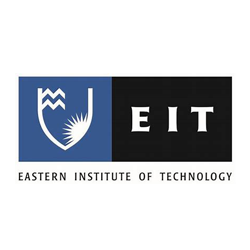
Project-Based Learning in Visual Arts and Design: What Makes it Work?
Status
Completed: 30 October 2014
Project Details
A project completed in 2014, undertaken by Eastern Institute of Technology, to redevelop their Bachelor of Visual Arts and Design (BVAD) into a project-based learning programme and identify the factors that ‘make project-based learning work’ in the context of arts and design education.
Aims:
The main aim of the project was to understand the transformation in student engagement and the processes that contributed to it, in order to support future developments in the school, within EIT, and in other education organisations who are considering developing project-based curriculum, particularly in the field of arts and design.
Methodology:
The project methodology involved:
- a literature review
- a case study of the redevelopment of the Bachelor of Visual Arts and Design
- a case study of the teaching of the first year of the redeveloped programme
- individual interviews with managers, tutors, support staff and students
- student course surveys
- data was also collected from the student management system and classroom and tutors meeting observations.
Research questions:
- What could project-based learning in visual arts and design education look like?
- What is a successful project-based learning environment in visual arts and design education?
- What are the crucial factors that contribute to a successful project-based learning environment in visual arts and design education?
- What advice can be given to others who wish to embark on a similar journey?
- How can the understandings developed in this project be used to guide the ideaschool team in further developing their teaching and other educational practices in the BVAD and other programmes within the school?
Team

Dr Suzette Major
Project Leader
Eastern Institute of Technology
Dr Elly Govers
Govers Educational Consultancy and ResearchStatus
Funding
$10,000.00 (excl GST)
Key Findings
The key findings from the project are described in terms of five key factors which have had a crucial role to play at each level of the development and implementation process of the BVAD:
- Holistic: taking a holistic approach to the redevelopment of the qualification; the redevelopment incorporates a holistic system of projects within projects that influence and are influenced by each other; and the student projects themselves are holistic in the sense that creative skills, the big concepts, theory, process and practice are all united in one project, leading towards the creation of an artefact.
- Collaboration: Collaboration between students, between tutors and management, and across these groups has been essential in making the projects successful at all levels. At all levels the people involved worked together in a spirit of learning from each other.
- Autonomy: A project is essentially entirely open in terms of task, time and people, creating an infinite number of possibilities for the project to emerge. By setting constraints the number of possibilities is reduced and the project becomes more closed. It has been important for the people involved in the BVAD to receive a significant amount of autonomy in shaping their respective projects.
- Ownership: Two dimensions of ownership are found here. One is ownership that is created through providing autonomy, as discussed above. A second dimension of ownership is probably particularly characteristic for the field of arts and design but may be found in other fields as well. Artists and designers tend to have a high personal attachment to their work: they own their work almost by definition from its very inception. This second dimension of ownership does not need to be created through autonomy; it already exists.
- Emergence: The BVAD is open ended and has no pre-defined outcomes. It is unknown what quality of work students will be able to create or who they will have become by the end of the programme. When the redevelopment process of the BVAD started none of the team members knew what the programme was going to look like. When students start a project, they do not know what they are going to create. As the projects at each level evolve, the outcomes start to emerge from the process.
Key Recommendations
The key recommendations from the project were:
The redevelopment process | For others who embark on a similar journey, the description of the redevelopment process in this document may help in providing ideas and inspiration for approaching the process.
The five key factors | We strongly recommend to embrace the five key factors of holistic, autonomy, ownership, collaborative and emergence. Nurturing the contributions and engagement of the people involved is of essence to make this happen.
Participant factors | For each participant in the redevelopment process, we have provided a list of factors which they may wish to consider in their programme, course or student projects.
A research report prepared by Suzette Major and Elly Govers.
(PDF, 2.64 MB, 93-pages).
- 14 September 2014